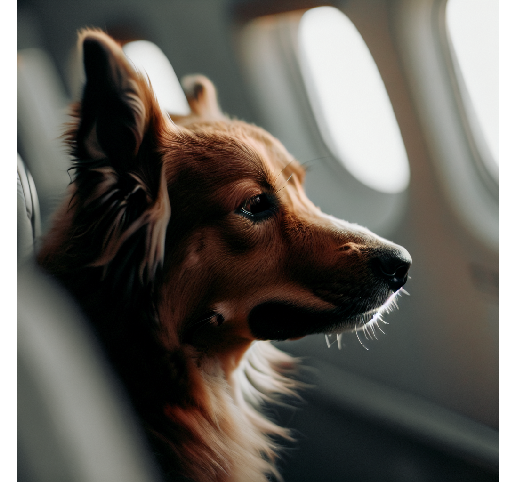
How to Pick the Perfect Travel Crate Size for Your Pet!
Share
Choosing the right crate size is crucial for your pet's safety and comfort, especially when flying. It can be tricky to navigate the guidelines and find the perfect fit, but understanding pet crate sizing is easier once you know what to look for. In this guide, we'll cover the essentials of pet crate sizing, focusing on Australian standards and airline-approved options.
Why Crate Size Matters
Proper crate sizing ensures that your pet can travel securely without feeling cramped or overwhelmed. An undersized crate can cause discomfort, anxiety, or even injuries, while an oversized one may not provide enough protection during transit. Moreover, airlines and other transportation services have strict requirements for crate dimensions, so selecting the right size is also key to meeting regulations.
Key Dimensions to Consider
Length
Measure your pet from the tip of the nose to the base of the tail. Then measuring the front leg up to the elbow. Take the total length plus half the elbow length to ensure your pet has room to lie down comfortably without being too restricted.
Height
Measure your pet from the ground to the top of the head or the tips of the ears (for dogs with erect ears). Your pet should be able to stand up without hunching over. Add an extra 5-10 cm to the height for a comfortable fit.
Width
The crate should be wide enough for your pet to turn around easily. This is vital to avoid stress during longer trips. Typically you will need double the width of your pet.
If you are still struggling to determine what size crate your pet needs Jetpets have an online crate calculator that you can use.
Airline-Approved Crates: PP Sizing Explained
When it comes to air travel, airlines often refer to "PP" (Pet Pack) sizing. These crates are designed to comply with IATA (International Air Transport Association) standards and ensure that pets can travel safely in cargo. Let's break down the PP sizing options most commonly used:
PP20: Extra Small size, suitable for pets like kittens and small breed puppies like Chihuahua etc.
PP30: Small size, suitable for cats and small dog breeds.
PP40: Suitable for large cats or snub nosed cats and small dogs such as Mini Schnauzer or Jack Russel
PP50: Suitable dog breeds such as Corgi, King Charles, Pug etc
PP60: This crate is for Medium dogs such as Border Collie, English Staffy, Spaniels
PP70: This crate is for Larger breeds such as Husky, Labradoodle etc
PP80 - H: This crate is for taller breeds such as Labrador, Boxer etc
PP90: This crate is for large breeds Rottweiler, Large Labrador, Samoyed etc
PP100: This crate is the same size as the PP90 but only taller so is great for German Shepherds, St Bernard, etc
Each of these sizes meets IATA standards for international and domestic air travel, ensuring that pets have adequate space to rest and move.
Special Considerations for Travel Crates
Airline Regulations: Different airlines may have slight variations in crate requirements for certain breeds, so always confirm with your airline before purchasing. However, using an IATA-approved PP crate generally will meet all airlines requirements.
Ventilation: Ensure the crate has sufficient ventilation on all sides, especially for air travel. This is a non-negotiable feature for airlines and helps keep your pet comfortable.
Durability: Pets must travel as cargo, meaning the crate should be durable enough to handle the rigours of transport. Ensure your crate is made from high-quality materials, and check that it has a secure locking mechanism to prevent escape.
Crate Accessories for Comfort
Stay-Dry Fleece Mats: These are excellent additions to your crate to keep your pet comfortable during the flight. Fleece mats help absorb moisture, keeping your pet dry throughout the journey.
Water and Food Bowls: Most airlines require crates to have water bowls attached. Make sure to secure bowls that are easily refillable from the outside without opening the crate.
Common Mistakes to Avoid
Guessing Your Pet’s Size: Don’t rely on estimations. Always measure your pet accurately to avoid buying the wrong size crate. Remember, it’s better to invest time in measuring than to deal with the hassle of last-minute adjustments.
Ignoring Weight Limits: Some crates are built to support a specific weight range. Double-check that the crate can handle your pet’s weight, especially for larger breeds.
Opting for the Cheapest Option: While budget is important, choosing a quality crate made from durable materials is essential for your pet’s safety. Look for trusted brands with good reviews and adherence to IATA standards.
Final Thoughts
Understanding pet crate sizing is crucial for ensuring your pet’s safety and comfort during travel. By measuring accurately and selecting the appropriate PP size, you’ll not only meet airline requirements but also provide your pet with a smooth, stress-free journey. Whether your pet is flying domestically or internationally, the right crate can make all the difference.
Remember, comfort equals safety, and a well-fitted crate means your pet will travel more comfortably. If you have any doubts, don’t hesitate to contact your airline or pet travel expert for further guidance.
